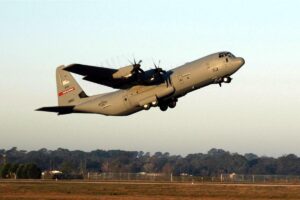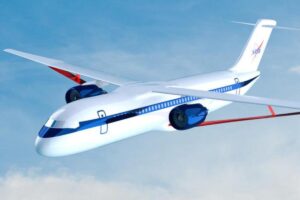ARINC-825 Converters for Reliable Data Translation
Executive Summary
Modern avionics and industrial control systems require increasingly complex data exchanges across a range of protocols. The ARINC-825 standard, a CAN (Controller Area Network)-based protocol adapted for aerospace applications, provides a reliable and deterministic method of data exchange in time-sensitive environments. However, integrating ARINC-825 with non-native protocols requires specialized converters that ensure seamless communication, synchronization, and data fidelity.
This white paper explores the design, function, and application of ARINC-825 converters, highlighting how they enable reliable data translation between ARINC-825 and other protocols like ARINC-429, Ethernet, MIL-STD-1553, and serial standards such as RS-232/RS-485. Emphasis is placed on the role these converters play in modern avionics systems, ground support equipment, and industrial automation.
Table of Contents
-
Introduction
-
Overview of ARINC-825
-
Importance of Data Translation in Avionics
-
ARINC-825 Compared to Other Protocols
-
The Role of Protocol Converters
-
ARINC-825 Converter Types and Topologies
-
Electrical and Data Layer Considerations
-
Software Stack and Protocol Translation Mechanisms
-
Real-Time Data Synchronization
-
Fault Tolerance and Redundancy
-
Use Cases in Avionics Systems
-
Application in Industrial and Transportation Systems
-
Converter Design Considerations
-
Testing, Certification, and Compliance
-
Future Trends in ARINC-825 Converters
-
Conclusion
1. Introduction
Avionics systems continue to evolve with increasing complexity, involving multiple subsystems communicating over different protocols. ARINC-825, which is based on CAN (ISO 11898), introduces a reliable, flexible, and deterministic communication method for use in aircraft systems. Despite its advantages, many legacy and even modern avionics components use different communication protocols.
To overcome compatibility challenges, ARINC-825 converters have become essential tools for translating data across heterogeneous communication interfaces. These converters ensure seamless interoperability between systems while preserving critical characteristics like message timing, format integrity, and fault tolerance.
2. Overview of ARINC-825
ARINC-825 is an aviation adaptation of the CAN protocol, standardized by Aeronautical Radio, Inc. (ARINC). Key characteristics include:
-
Based on CAN 2.0B (29-bit identifier extended format)
-
Operates at data rates up to 1 Mbps
-
Deterministic message scheduling (via higher-layer protocols like CANaerospace)
-
Broadcast and point-to-point capabilities
-
Robust error handling with CRC checks and acknowledgment mechanisms
-
Supports bus arbitration through priority-based message identifiers
ARINC-825 is particularly suitable for flight-critical and non-critical systems requiring a robust and low-overhead communication bus.
3. Importance of Data Translation in Avionics
Modern aircraft are composed of a mix of legacy and contemporary systems. Flight control, engine monitoring, cabin management, and in-flight entertainment often use different communication protocols:
-
Flight control may use ARINC-429 or MIL-STD-1553
-
Engines might utilize ARINC-825 for diagnostic messages
-
Maintenance systems may rely on RS-232 or Ethernet
To enable interoperability, converters are used to translate between ARINC-825 and these disparate protocols, avoiding complete system redesign and ensuring backward compatibility.
4. ARINC-825 Compared to Other Protocols
| Protocol | Max Data Rate | Topology | Application Area | Strengths |
|---|---|---|---|---|
| ARINC-825 | 1 Mbps | Multi-master bus | General avionics | Robust, deterministic |
| ARINC-429 | 100 kbps | Point-to-point | Critical avionics data | Simple, reliable |
| MIL-STD-1553 | 1 Mbps | Dual-redundant | Military/space | Fault-tolerant, redundant |
| Ethernet | >1 Gbps | Star | IFE, maintenance | High bandwidth |
| RS-232/485 | 20 kbps–1 Mbps | Point-to-point | Legacy sensors | Low-cost, easy to use |
ARINC-825 strikes a balance between simplicity and capability, making it ideal for non-flight-critical but essential subsystems.
5. The Role of Protocol Converters
ARINC-825 protocol converters serve as communication bridges that:
-
Translate data structure, timing, and electrical characteristics
-
Maintain message priority and synchronization
-
Ensure deterministic behavior for real-time systems
-
Enable system upgrades without requiring replacement of legacy components
-
Support multiple data buses within a single system architecture
These converters may be standalone devices, embedded modules, or part of a broader I/O subsystem.
6. ARINC-825 Converter Types and Topologies
A. Converter Types
-
ARINC-825 to ARINC-429 Converters
-
Translate ARINC-825 CAN messages to ARINC-429 labels
-
-
ARINC-825 to RS-232/RS-485 Converters
-
Useful for interfacing with legacy serial equipment
-
-
ARINC-825 to MIL-STD-1553 Converters
-
For military and aerospace interoperability
-
-
ARINC-825 to Ethernet/IP Converters
-
Enabling integration with ground systems and diagnostic tools
-
-
Multi-Protocol Bridges
-
Support multiple interfaces in one device for modular flexibility
-
B. Topologies
-
Point-to-point: Used when two systems need direct communication
-
Bus integration: Converter acts as a node on the ARINC-825 bus
-
Star topology (via switches): When integrating Ethernet or multiple ARINC-825 segments
Converters can be internal modules or externally mounted boxes, depending on system architecture.
7. Electrical and Data Layer Considerations
Physical Layer Translation
-
ARINC-825 uses differential signaling (CAN physical layer)
-
ARINC-429 uses unidirectional differential signaling
-
RS-232 uses single-ended voltage levels
Converters must manage signal conditioning, level shifting, and impedance matching. Isolation techniques (galvanic, opto-isolation) ensure safety and noise immunity.
Data Framing
-
ARINC-825 uses extended 29-bit CAN identifiers
-
ARINC-429 and MIL-STD-1553 use fixed word lengths and unique label structures
-
Ethernet uses packets with IP/TCP or UDP headers
Converters must implement data encapsulation and proper timing to preserve message semantics across formats.
8. Software Stack and Protocol Translation Mechanisms
Stack Elements
-
Driver Layer: Interfaces with physical layer
-
Protocol Decoder: Interprets ARINC-825 messages
-
Message Mapper: Maps to equivalent target protocol format
-
Scheduler: Handles deterministic timing requirements
-
Buffer Manager: Prevents overflow or data loss
Translation Methods
-
Static Mapping: Predefined lookup tables associate ARINC-825 messages with equivalent protocol frames
-
Dynamic Mapping: Real-time routing and reformatting based on message content and context
-
Gateway Mode: Converter operates as an intelligent node with bidirectional translation
Converters should support firmware updates for future protocol changes or refinements.
9. Real-Time Data Synchronization
Real-time operation is critical in avionics. Converters must:
-
Maintain low-latency translation (<5 ms)
-
Prioritize time-sensitive messages (e.g., engine data)
-
Handle clock synchronization where applicable (e.g., IEEE 1588 PTP over Ethernet)
Failure to synchronize data accurately can result in system instability or safety-critical faults.
10. Fault Tolerance and Redundancy
In aircraft systems, reliability is non-negotiable. Converters should support:
-
Dual redundant inputs/outputs
-
Watchdog timers
-
Error logging and diagnostics
-
Fail-safe default states on communication loss
Compliance with ARINC 664 and RTCA DO-254 guidelines may be necessary for flight-critical applications.
11. Use Cases in Avionics Systems
Flight Data Monitoring
ARINC-825 converters capture data from CAN-based avionics systems and relay it to ARINC-429 or Ethernet interfaces for black box recording and flight data analysis.
Engine Monitoring Systems
CAN-based ECUs (Electronic Control Units) may communicate over ARINC-825. Converters enable this data to be integrated with the aircraft’s main avionics network using ARINC-429 or 1553.
In-Flight Entertainment (IFE)
Some IFE systems use Ethernet or serial connections. ARINC-825 converters allow communication between these systems and cabin control units that operate over CAN-based networks.
12. Application in Industrial and Transportation Systems
ARINC-825, while primarily for avionics, also sees application in:
-
Railway Systems: Converters allow CAN-based sensors to communicate with Ethernet-based control systems
-
Automotive Testing: Converters interface ARINC-825-capable ECUs with laboratory-grade equipment using RS-232
-
Industrial Automation: Machines using CANopen or ARINC-825 can be integrated into SCADA systems via converters
These applications benefit from ARINC-825’s determinism and the converters’ ability to interface with broader control architectures.
13. Converter Design Considerations
When designing or selecting ARINC-825 converters:
-
Protocol Support: Ensure compatibility with desired target protocols
-
Timing Precision: Verify latency and jitter performance
-
Environmental Resistance: Must meet DO-160 or MIL-STD-810 requirements
-
Security Features: Especially for Ethernet-bound data
-
Scalability: Support for multiple nodes, dynamic message filters, and configuration profiles
Configurable interfaces allow reuse of converters across different platforms.
14. Testing, Certification, and Compliance
Converters must meet applicable aerospace standards:
-
RTCA DO-160: Environmental and EMC testing
-
RTCA DO-178C/DO-254: Software and hardware assurance for airborne systems
-
ARINC 825/664/429 Compliance: Protocol and timing verification
-
FAA/EASA Certification: If used in certified systems
Testing involves:
-
Bus Analyzers: To monitor CAN, ARINC-429, or MIL-STD-1553 traffic
-
Protocol Simulators: To verify correct translation and timing
-
Hardware-in-the-loop (HIL) Systems: For integrated system testing
15. Future Trends in ARINC-825 Converters
Virtualized Converters
Software-defined converters running in virtual machines or containers will enable more flexible data handling, especially in next-generation avionics architectures.
AI-Augmented Message Translation
Machine learning algorithms can optimize dynamic mapping and error handling in real-time systems.
Higher-Speed CAN Interfaces
As CAN FD and CAN XL gain traction, converters will need to adapt to higher data rates and larger payloads, requiring backward-compatible but extensible designs.
Integrated Data Gateways
ARINC-825 converters will increasingly become part of larger data concentration units or modular avionics architectures, reducing the need for discrete hardware.
16. Conclusion
ARINC-825 converters play an essential role in modern avionics and control systems, enabling reliable communication across diverse protocols. These devices ensure interoperability, preserve legacy investments, and allow for incremental upgrades without jeopardizing safety or performance.
As systems evolve toward greater integration and complexity, the importance of flexible, robust, and certified data translation tools will continue to grow. ARINC-825 converters are a cornerstone of this evolution, serving as both translators and guardians of system integrity.





